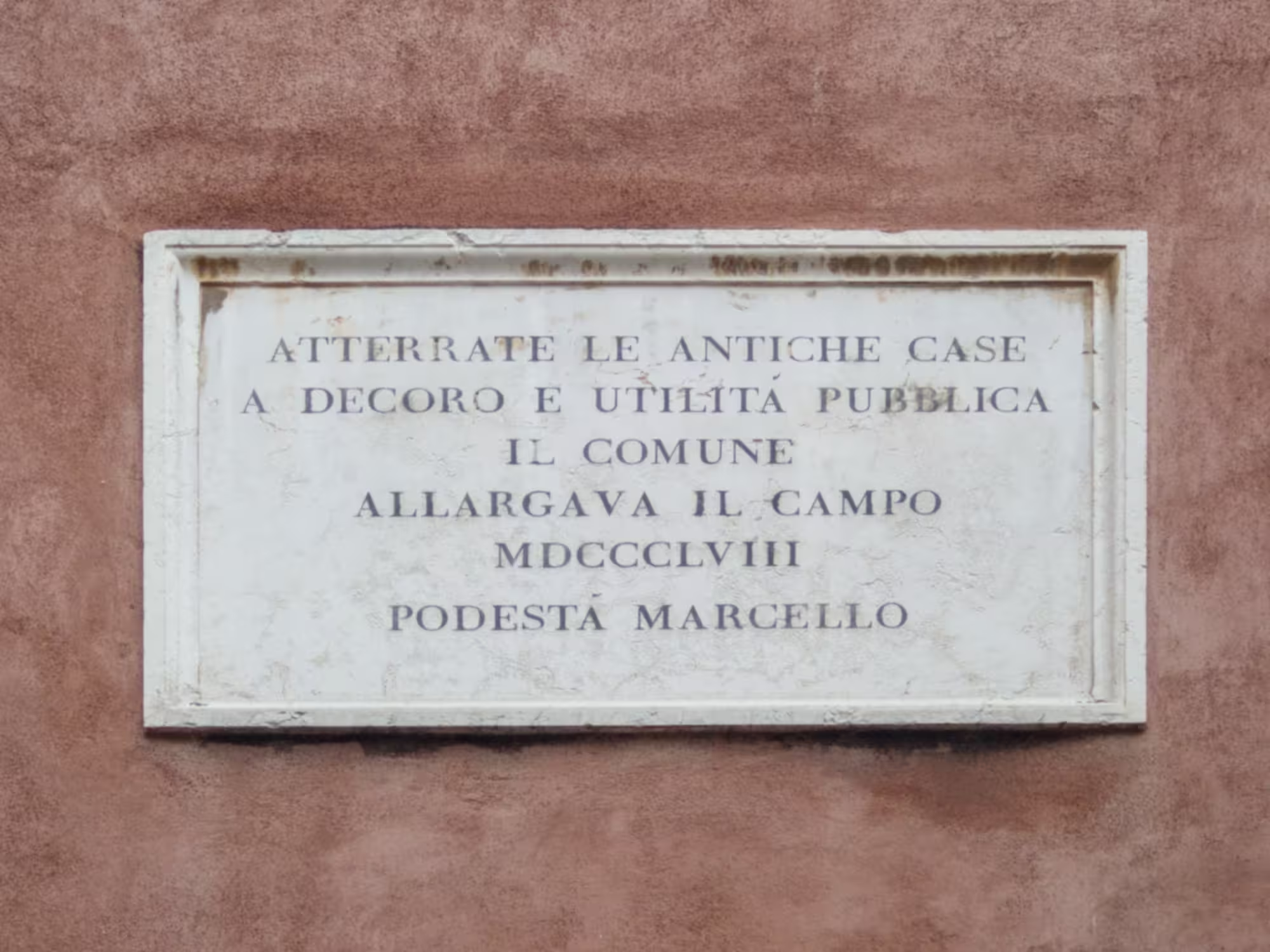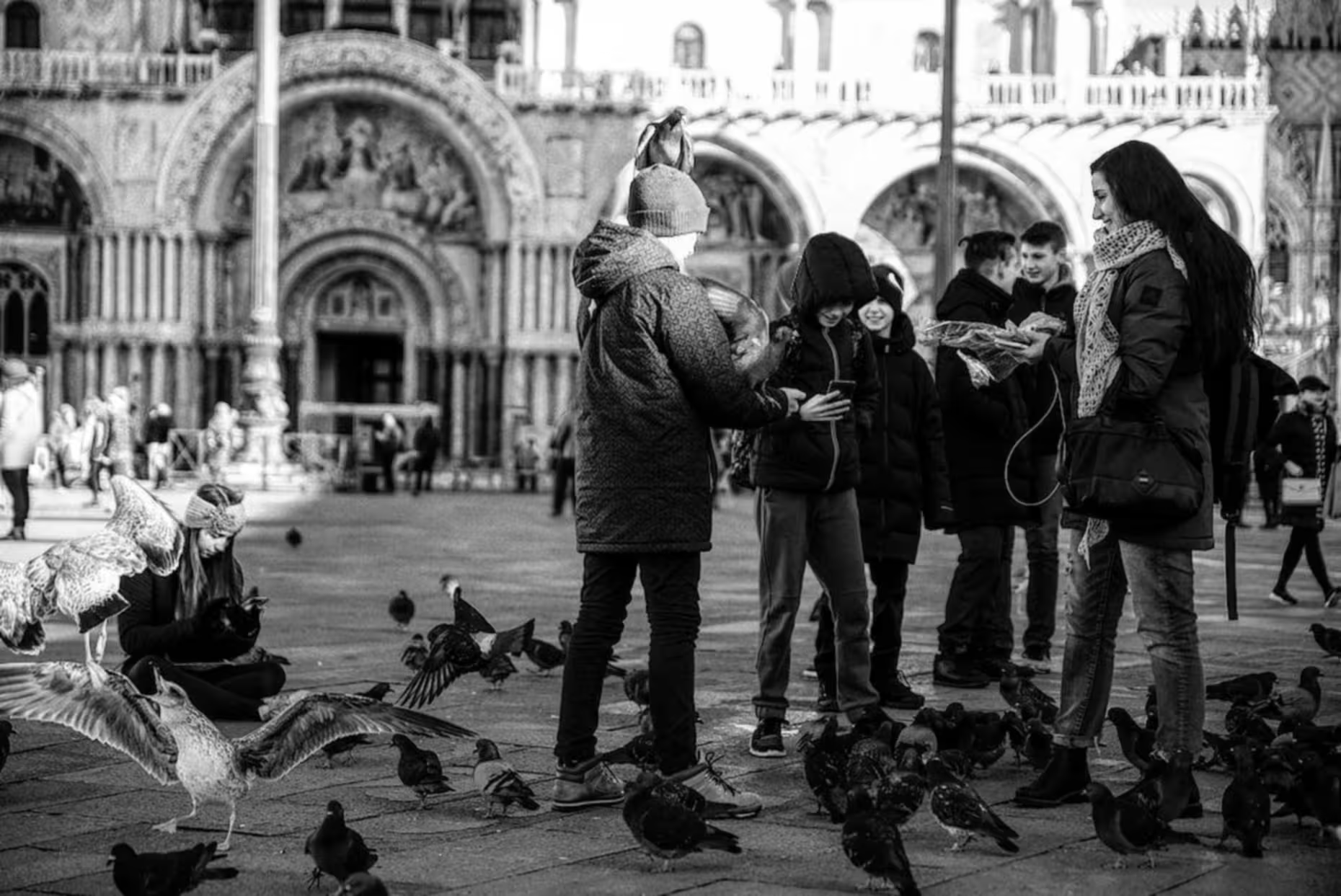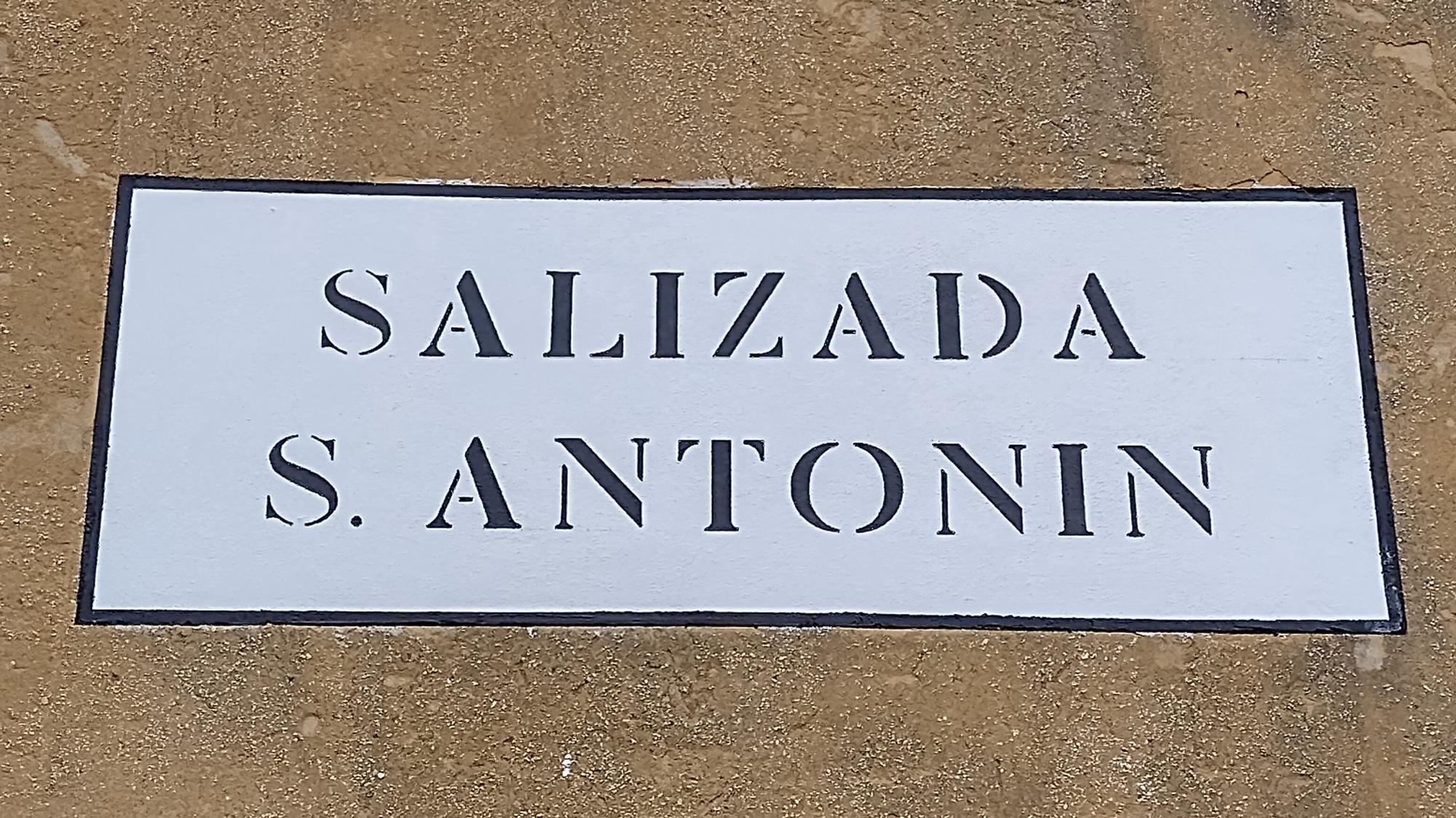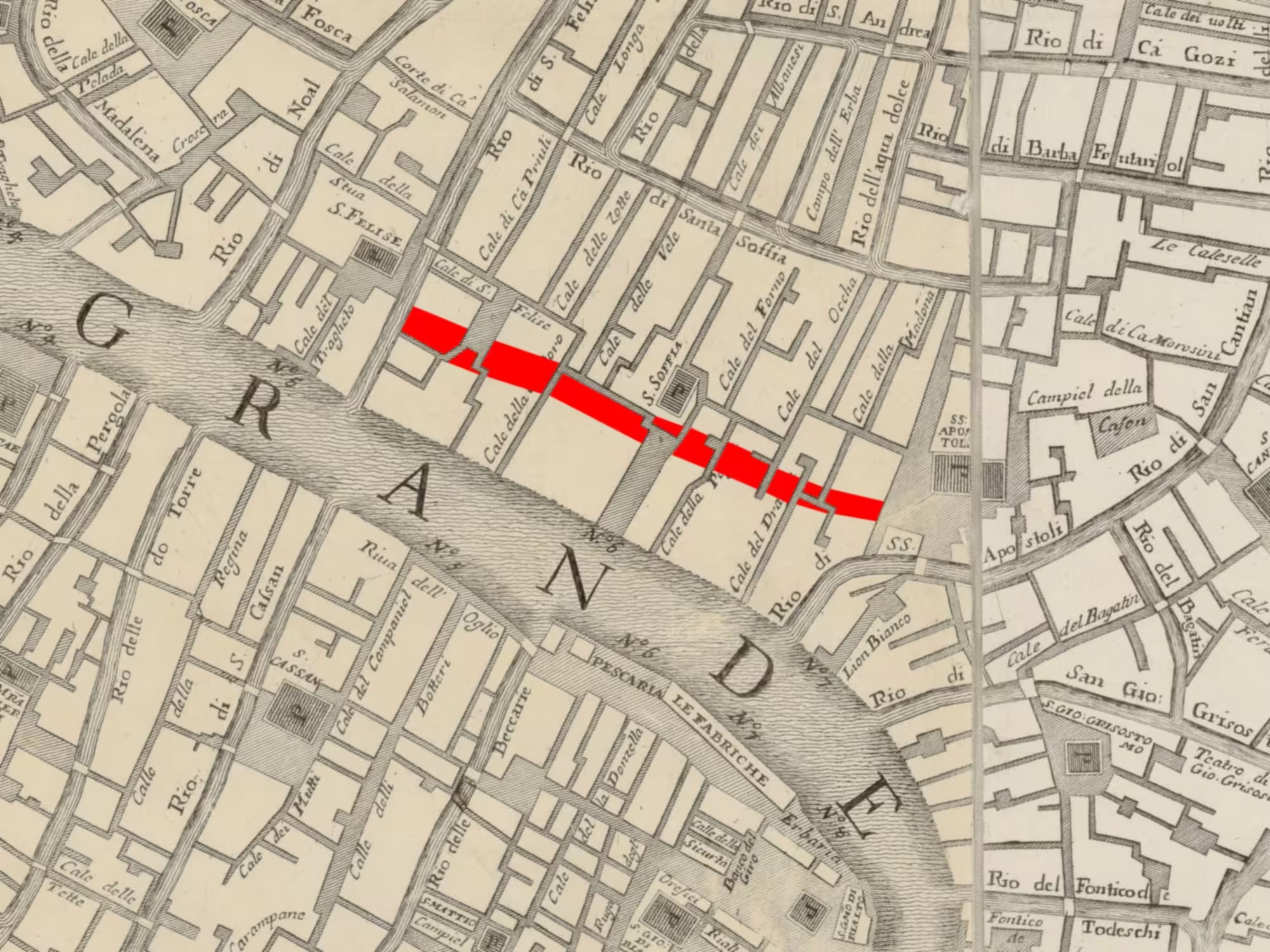The Strada Nova was not a single project with an overarching scope. It was rather a series of changes, spanning half a century, which became the start of mass tourism in Venice.
Strada Nova
This post is part of a series on the changes made to create the Strada Nova, which connects the railroad station with the Rialto area.
Much of this happened, or started, under the Austrian domination, but it didn’t stop when Venice became Italian in 1866.
It also happens in periods when descendants of the old Venetian aristocracy were in charge of local administration.
The inscription left on a wall at Campo San Bartolomeo is emblematic of the attitude of the people in charge:
Demolished the ancient houses For public decor and utility The city administration Enlarged the square 1863 Podestà Marcello
The podestà was the appointed head of the local administration during the Austrian domination.
Chronology
In this series, we have seen these major changes along the route from the station to Rialto.
- 1806
Suppression of the Oratorio de l’Anconeta. - 1807
Church of San Leonardo deconsecrated. - 1810
Suppression of the Church of Santa Lucia
Suppression of the monastery of Corpus Domini - 1818
Rio di San Leonardo and Rio del Cristo interred and the landmark of the Due Ponti disappeared from the map. - 1846-1849
Rio dell’Isola interred. - 1855
The Oratorio de l’Anconeta and three blocks of houses demolished. - 1858
Campo San Bartolomeo enlarged with the demolition of several buildings. - 1860
Church of Santa Lucia demolished.
Monastery of Corpus Domini demolished. - 1863
Campiello Flaminio Corner opened after the demolition of several houses. - 1867
Two blocks of houses demolished at Santa Fosca.
Two blocks of houses demolished at San Felice. - 1872
The Strada Nova at Santa Sofia opened after the demolition of about a dozen blocks of houses. - c 1903
Campiello Riccardo Selvatico opened after the demolition of two buildings.
Some final thoughts
For a thousand years Venice was run by Venetians for Venetians. Once Venice lost statehood, and came under the authority of outsiders, whether French, Austrian or Italian, those outsiders started adapting the city to their needs and wishes.
The Strada Nova is one of the very first parts of this adaptation. Instead of being by Venetians for Venetians, in the 1800s Venice was managed by outsiders for outsiders.
This has never stopped. The Venice we live in today is therefore ever more adapted to the needs and desires of tourists, or even ex-Venetians now living on the mainland for a couple of generations, and ever less to the wishes of the actual residents of the city.
In the 1920s and 1930s Italian government united the Municipality of Venice with several neighbouring municipalities, in the lagoon and more importantly on the mainland. The movement of the harbour to the mainland was a major faction in these decisions. Consequently, two-thirds of the population of the larger municipality now live on the mainland, and only about twenty percent actually live in Venice.
In the current giunta (akin to a local government) out of a dozen members, there is one (1) who lives in Venice. All the others are from the mainland.
The outsiders have taken over Venice, and the city and its remaining population suffers as a result.
Localities
This post is the last part of a series on the changes made to create the Strada Nova, which connects the railroad station with the Rialto area. The Strada Nova is arguably the beginning of mass tourism in Venice.
The previous post covers the final part from SS Apostoli to Rialto.





Leave a Reply